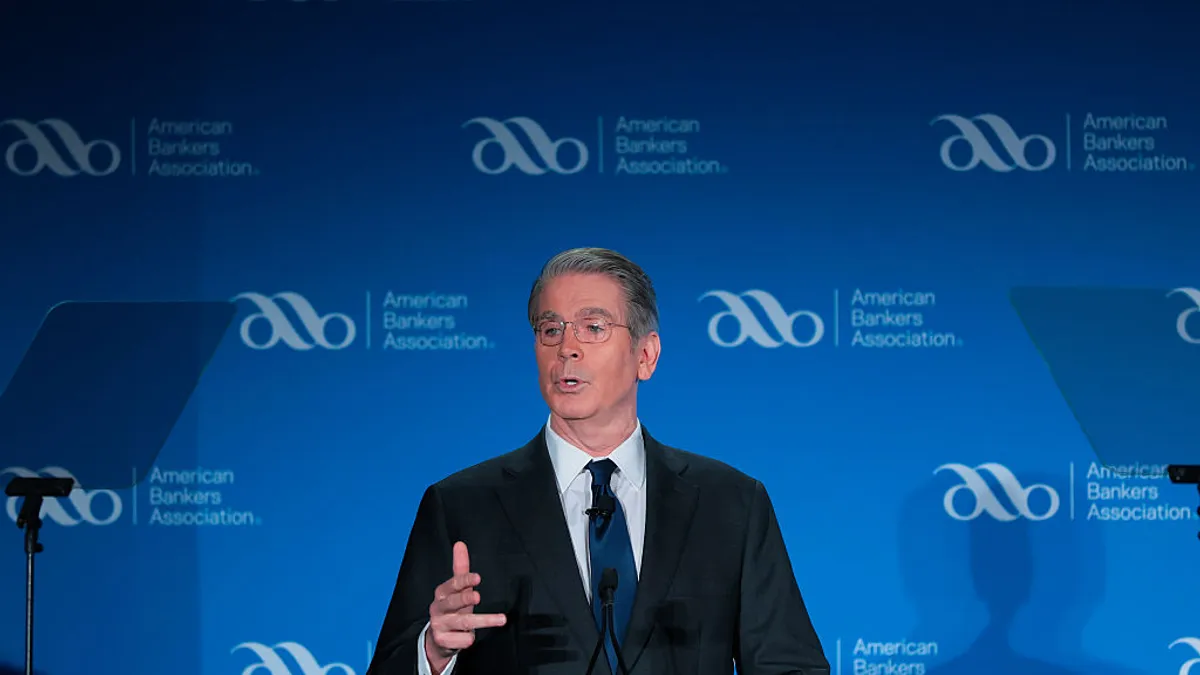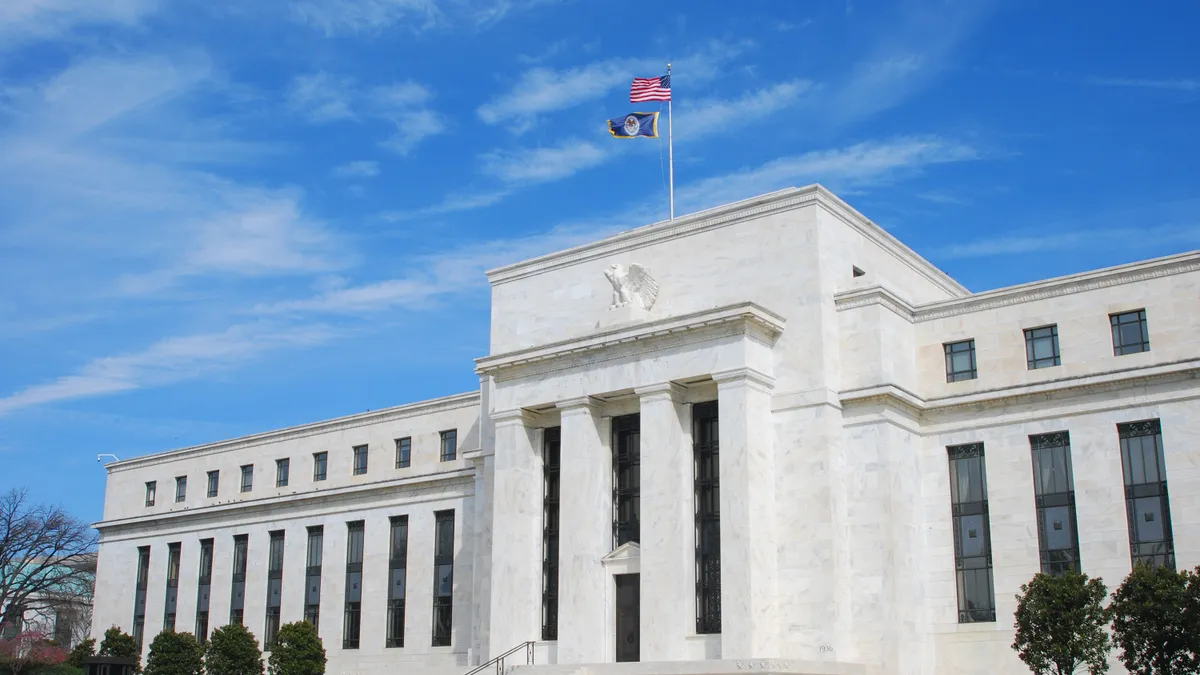Dive Brief:
- Treasury Secretary Scott Bessent told a group of bankers Wednesday that the department “intends to play a greater role in financial regulation,” as the Trump administration seeks to ensure bank regulators fulfill their statutory mandate “consistent with his priorities.”
- In particular, Bessent, speaking at the American Bankers Association’s Washington summit, will focus on ensuring smaller, community banks matter more in bank regulation, pursuing reforms related to regulatory tailoring, supervision, capital requirements, liquidity, and the anti-money laundering/countering the financing of terrorism framework.
- “Bureaucratic hubris has escaped the beltway,” Bessent told the group of bankers Wednesday. “Our goal is to put it back in its cage.”
Dive Insight:
As for the Treasury’s “greater role,” Bessent said the Financial Stability Oversight Council is one potential forum for that, while the President’s Working Group on Financial Markets is another.
Bessent said President Donald Trump entrusted him with choosing personnel, noting a roster of nominees to lead agencies that all have previous experience in financial regulation, including former Federal Deposit Insurance Corp. board member Jonathan McKernan to lead the Consumer Financial Protection Bureau and Federal Reserve Gov. Michelle Bowman to become the central bank’s vice chair of supervision.
“I do believe policy is personnel, personnel is policy,” Bessent said. “I’m just the conductor and I’ve got a great orchestra, and we’re going to make great music.”
As the Trump administration pledges to make bank regulation more fair and efficient, striking a balance between cost and benefit “requires tailoring regulatory actions to the specific risk profiles of different business models,” Bessent said. “In assessing the cost of a regulatory action, we should be attentive to the potential burdens arising from unintended consequences.”
Bessent expressed concern that community banks are being unduly burdened by compliance requirements. Applying “common sense principles,” the Treasury plans to push more tailored regulation for those banks. “There may be strong cases for categorical exemptions of community banks from some entire regulations,” he said.
In particular, the Treasury will look at the CFPB’s recent rules and bank regulator expectations related to internal controls, including third-party risk management and information security, Bessent said.
Refocusing bank supervision on material financial risk is one of the most significant reforms, he said. “Regulators should keep the main thing the main thing.”
He also said the Treasury “intends to drive a change in the culture of supervision” by improving exam procedures, bolstering its monitoring of examiners’ compliance and “more realistic processes” for banks to appeal supervisory findings.
“Most glaringly, regulation through supervision has too often taken place behind a veil of secrecy that precludes scrutiny by the public and their elected officials,” and the Trump administration plans to correct that, Bessent said.
Maybe the most consequential step would be defining “unsafe and unsound” by rule, using more objective measures rooted in financial risk, he said.
Bessent also noted the shift of mortgage lending to nonbanks – which has undercut an important business for community banks. That was driven, in part, by regulation, such as outdated capital requirements, he contended.
Bessent advocated for a different approach toward revamping capital requirements, saying the U.S. shouldn’t outsource its decision making to international bodies such as the Basel committee, and instead should conduct its own analysis to determine the right framework.
“A significant open question would be how to foster competitive parity across large and small banks and nonbank lenders,” he said. “Modernizing regulatory capital likely would mean reduced capital requirements for mortgage loans and some other exposures that are core to the community bank model.”
Additionally, Bessent said the Treasury will review the capital buffer framework that applies to the largest banks. The process for sizing each large bank’s stress capital buffer should be consistent with the law and provide transparency and opportunity for comment, he said.
Bessent said he’s raised concerns about whether leverage capital restrictions are too frequently binding, and bank regulators are now at work “to develop a proposal to ensure that leverage capital functions as an appropriate backstop.”
After post-2008 reforms required large increases in banks’ investments in central bank reserves, treasuries and other high-quality assets that can be liquidated during stress events, more than one-quarter of banks’ balance sheets now go toward these assets, Bessent noted.
“While strengthening liquidity, the shift to safe assets has meant less funding available for loans and other productive assets,” he said. “It is time that we step back and reassess these and other cost benefits of the liquidity framework.”
Bessent also said regulators will revisit the role of the discount window and federal home loan banks, “including whether there are opportunities to clarify the role of these funding sources in internal liquidity stress testing and the supervision of banks’ contingency funding plans.”
Bessent also teased that the Treasury plans to advocate for changes to anti-money laundering and counterterrorism financing rules, “to truly focus on national security priorities and higher risk areas, and explicitly permit financial institutions to deprioritize lower risk.” He also seeks to work with Congress to consider reforms to deposit insurance; consider enhancements to bank resolutions to incorporate lessons learned from the 2023 failures; and review regulatory impediments to blockchain, stablecoin and new payment systems.















